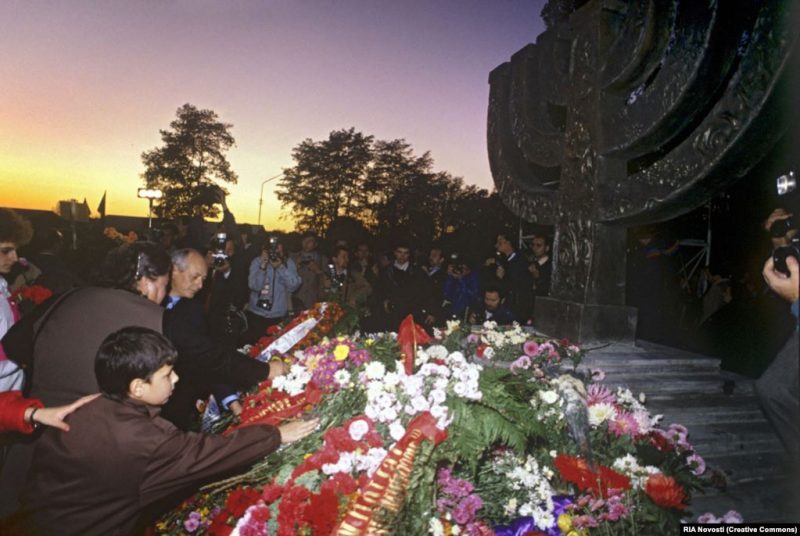79 years ago today, the first massacre at Babyn Yar began in Kyiv, Ukraine. Taking place over the course of only two days, from September 29 to September 30, 1941, the massacre resulted in the murder of 33,371 Jewish citizens of Kyiv, making it among the largest single Nazi mass killings during the Holocaust.

The Nazis entered Kyiv on September 19, 1941 and the city became part of Reichskommissariat Ukraine. On September 28, a notice was posted all over Kyiv in Russian, Ukranian, and German, requiring that Jews “appear on Monday September 29, 1941 by 8 a.m. at the corner of Melnikova and Dokhterivskaya streets (next to the cemetery). Bring documents, money and valuables, and also warm clothing, bed linen etc.” This notice, in its request that Jews bring their important belongings with them, sought to deceive the victims into thinking that they were being “resettled” elsewhere.
Beginning on the morning of September 29, the Einsatzgruppen, with the assistance of auxiliary police, gathered the Jews at Babyn Yar, a ravine on the outskirts of Kyiv. The victims were forced to leave each of their belongings in a designated place and undress. They were then led into the ravine, where they were shot in groups by Einsatzgruppe C and covered by a thin layer of dirt in preparation for the next group.
In the months and years following September 1941, thousands more were murdered at Babyn Yar, including more Jewish victims, as well as Roma, Soviet POWs, and anti-Nazi activists. In total it’s believed that 100,000 people were murdered by the Nazis at Babyn Yar.

Despite protests for many years, it was 1976 before a memorial was dedicated at Babyn Yar. This was achieved in part by the poem “Babi Yar”* by Yevgeny Yevtushenko, which opens with the line, “No monument stands over Babi Yar.” This memorial, however, did not specifically mention the Jewish victims. Instead, Soviet officials chose to represent the September 1941 massacre, and subsequest mass killings, as an attack on Soviet citizens and citizens of Kyiv as a whole. While many who were murdered at Babyn Yar after the initial massacre were not Jewish, the specific lack of mention of Jewish victims was glaring. 50 years after the massacre, in 1991, a memorial in the shape of a menorah to honor Jewish victims was finally unveiled.
Below, we invite you to view a selection of objects commemorating Babyn Yar throughout the years that are in the Museum’s collection.